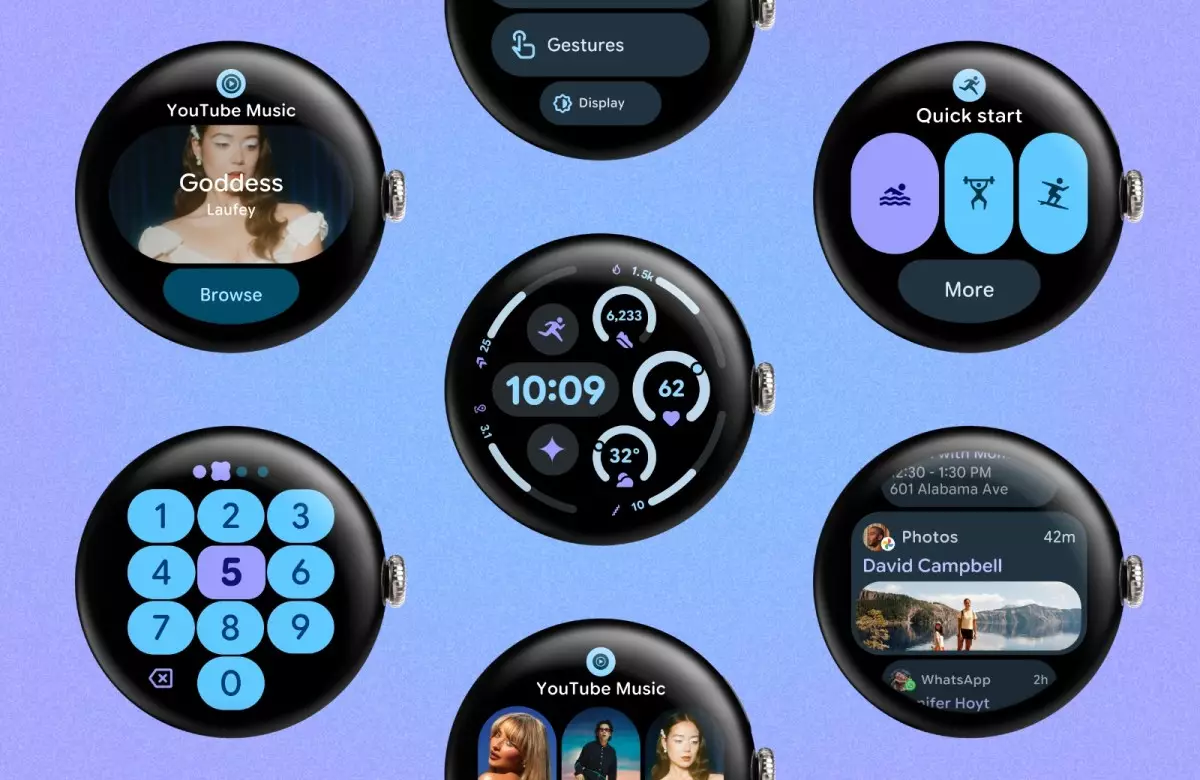In a vibrant display of creativity and technological advancement, Google has made a significant announcement at Google I/O 2025, revealing the latest iteration of its smartwatch operating system: Wear OS 6. This is not merely an update; it’s a full-fledged reimagining, driven by the company’s desire to enhance user experience and empower developers. The use of Material 3 Expressive, a forward-thinking design language recently introduced, signals a commitment to not just aesthetics but also functionality, marrying visual appeal with intuitive usability.
A New Era of Cohesion and Customization
One of the primary goals of Wear OS 6 is to establish a fluid design consistency across applications, which is a vital component for any modern operating system. By standardizing fonts across app tiles, Google is paving the way for a more uniform look that enhances the user experience, eliminating the jarring variations that can detract from seamless engagement. The incorporation of a dynamic theming library is a noteworthy touch, allowing apps to dynamically align their color schemes with the current watch face. This feature exemplifies a broader trend toward personalization in wearable technology, catering to users’ desires for customized functionality.
Development Tools for a New Dimension
Developers will revel in the new tools and libraries being introduced. Through the release of design guidelines alongside Figma files, Google is providing invaluable resources that foster innovation. The introduction of Wear Compose Material 3 and the Wear ProtoLayout libraries equips developers with an expansive palette of colors, fonts, and shapes, unleashing their creativity in crafting visually arresting applications. This shift towards allowing more intricate customizations is critical, as it can lead to a marketplace of diverse applications, engaging a wider audience and driving adoption of the platform.
Adapting to the Circular Aesthetic
As smartwatches trend toward circular displays, Google embraces this design with a thoughtfully curated three-slot tile layout. The layout’s structure—consisting of a title slot, a main content area, and a bottom slot—ensures that apps present information in an organized manner, regardless of the watch size. This attention to detail in the form of new buttons, progress indicators, and scroll indicators further optimizes the circular user interface. The flexible design of collapsing components, which can shrink as they approach the screen edges, reflects a keen understanding of user interaction that prioritizes convenience and clarity.
Revolutionizing Wearable Interactions
Wear OS 6 is more than just aesthetic enhancements; it brings significant functional upgrades, particularly in the realm of watch faces. The ability to transition smoothly from an ambient to an interactive state not only enriches the user experience but also adds a layer of dynamism that sets it apart from its predecessors. Furthermore, the introduction of the CredentialManager API is a notable security enhancement, allowing users to authenticate through passkeys directly on their smart devices—an essential feature at a time when digital security is paramount.
By integrating richer media controls in Wear OS 5.1, including innovative podcast management features, Google is extending the capabilities of smartwatch media interactions to match the growing complexity of digital lifestyles. The addition of features such as playlist management and interactive controls reflects a forward-thinking approach, transforming the smartwatch into a central hub for personal entertainment.
Each of these enhancements contributes to an overarching narrative: Google is not just enhancing Wear OS; it’s redefining what smartwatches can do in the framework of modern technology. This commitment to innovation will likely yield a more interconnected, user-friendly ecosystem for both developers and consumers alike.

